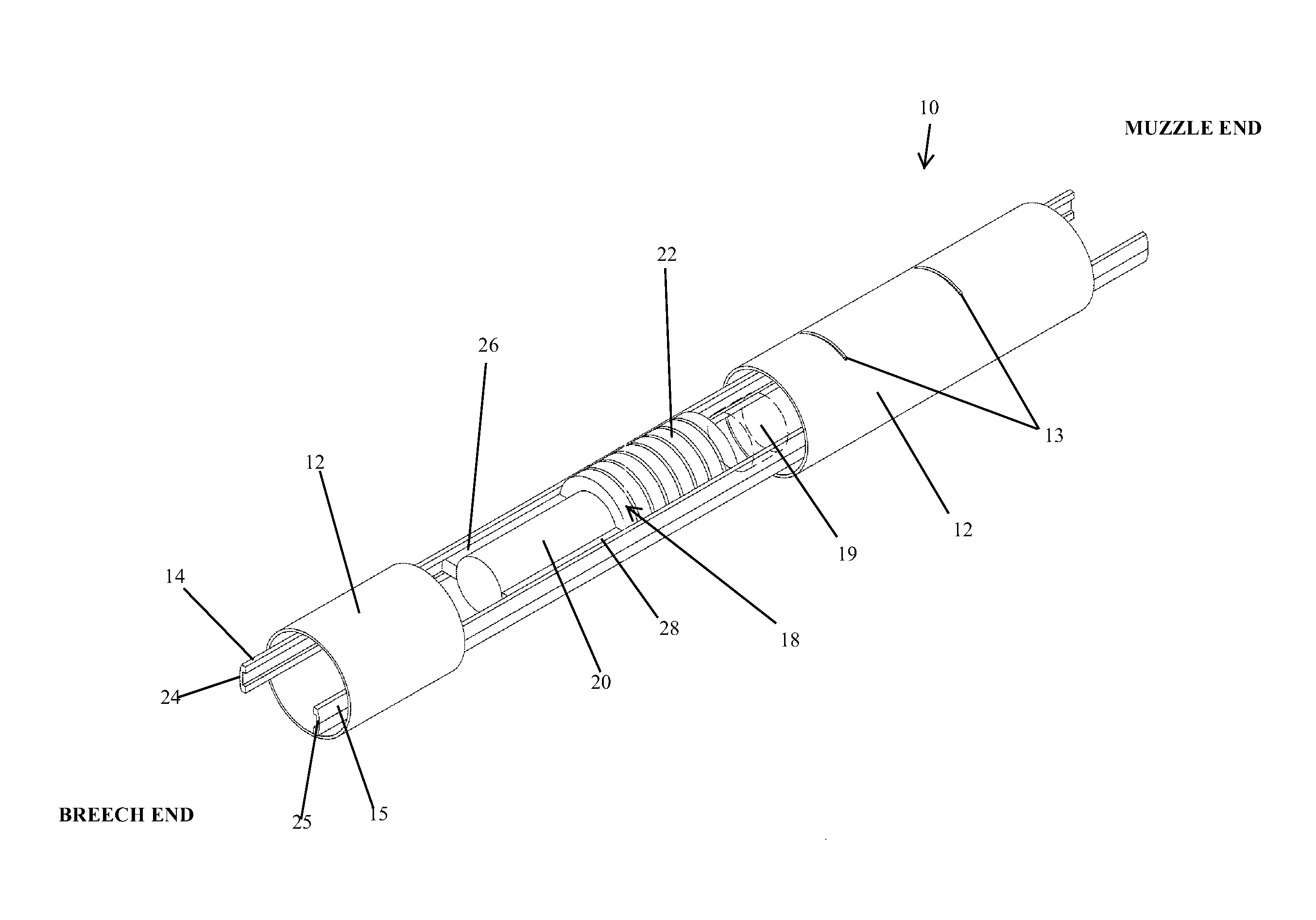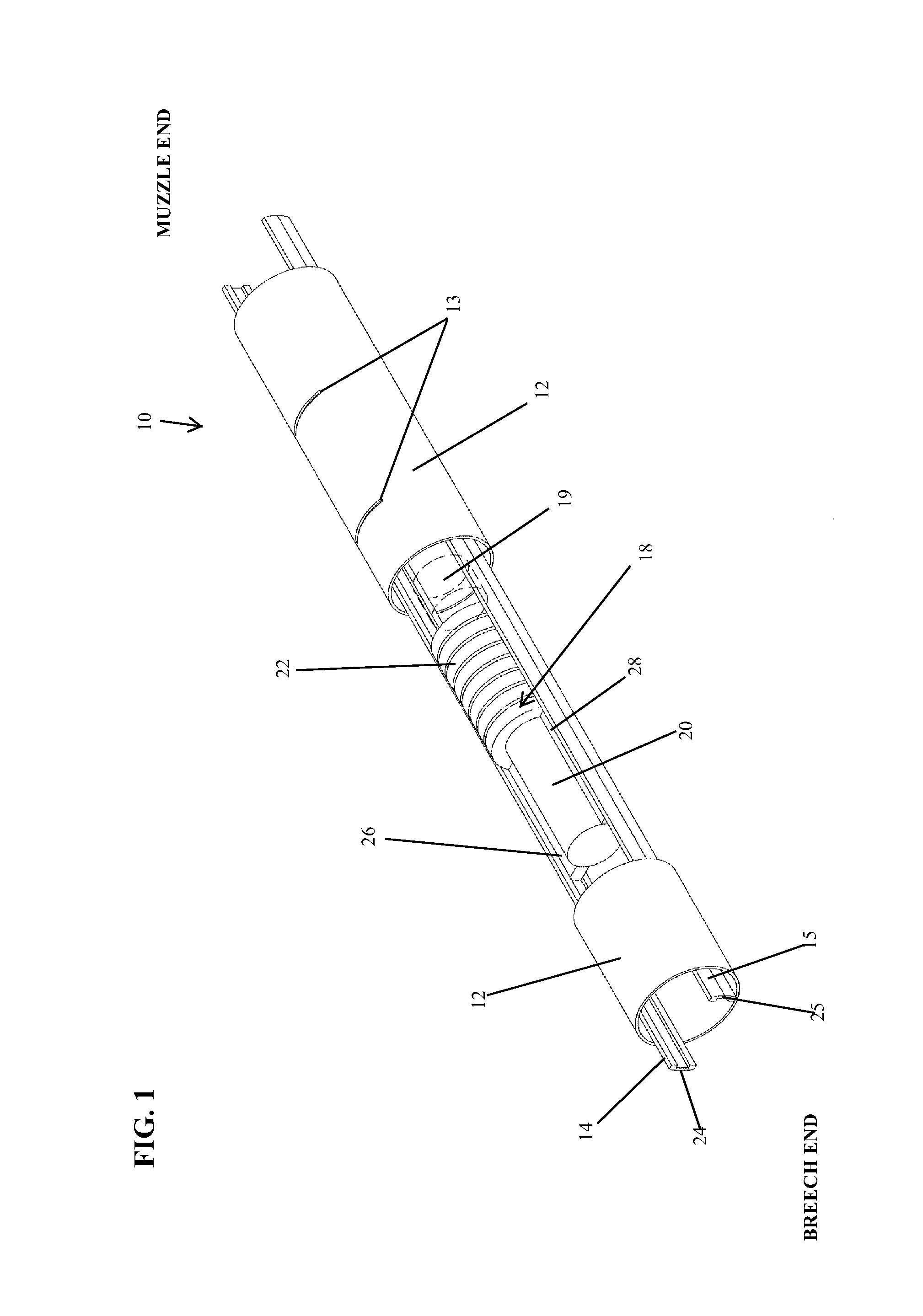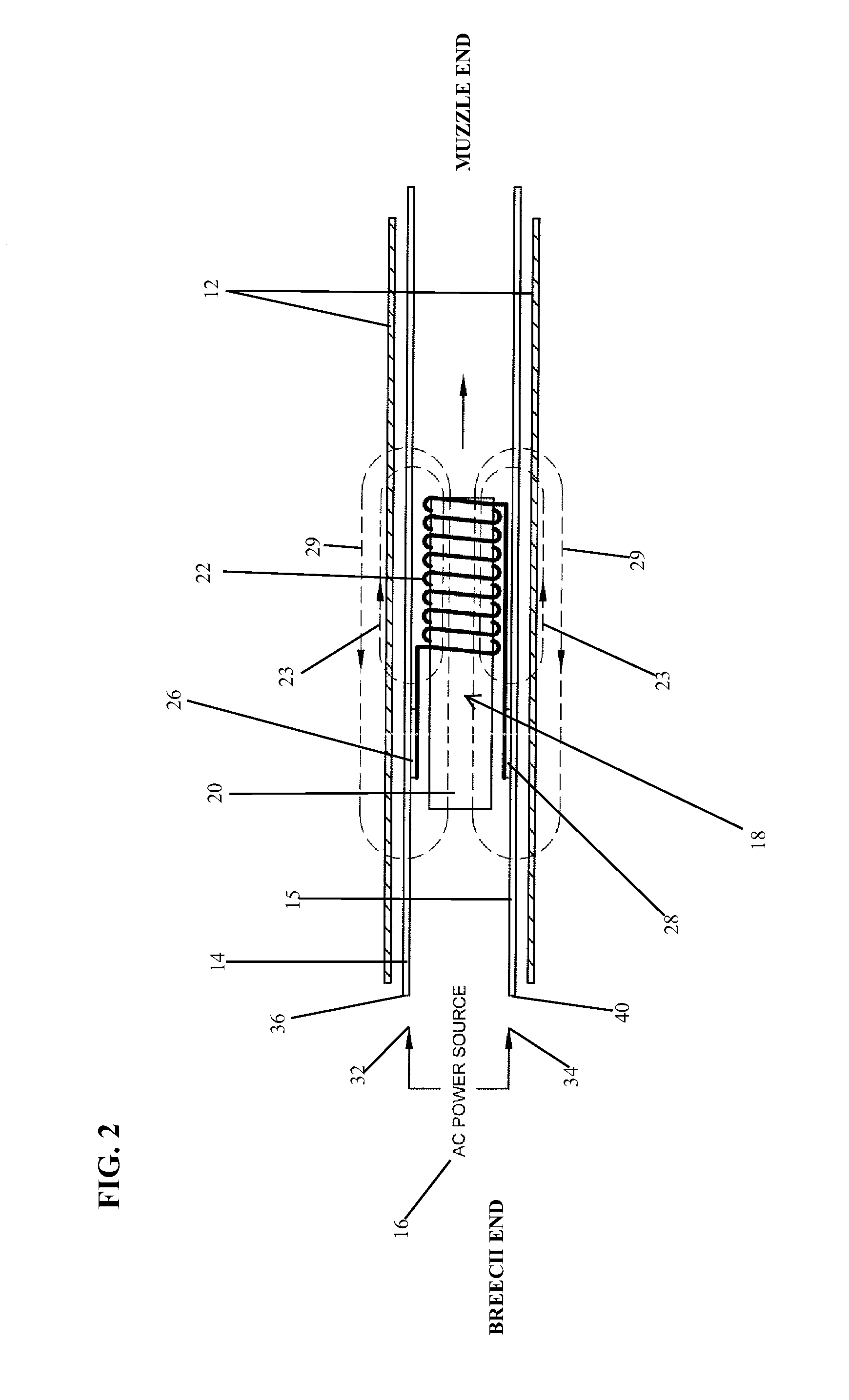Rail gun launcher
a launcher and rail technology, applied in the direction of launching weapons, white arms/cold weapons, dynamo-electric components, etc., can solve the problems of extremely high current required to be generated over a very short period of time, extremely high current required, and difficult to achieve, and achieves simple structure, efficient acceleration of armature, and elimination of inductive losses
- Summary
- Abstract
- Description
- Claims
- Application Information
AI Technical Summary
Benefits of technology
Problems solved by technology
Method used
Image
Examples
example 1
[0057]As an example of the embodiment shown in FIGS. 1-2, in calculations comparing the present invention with a conventional rail gun, with an extended length for the gun rails and without accounting for air friction, in an ideal scenario wherein there is no friction, the magnetic force F can be calculated using the Lorentz equation, which is reformatted below as Equation B, in SI units,
F=L*I*B*N (Equation B)
wherein the magnetic force (F) is measured in Newtons, the length (L) is measured in meters, the current (I) is measured in amperes, the magnetic field (B) is measured in Tesla, and N is the number of turns in the coil. In the present invention, if only one-tenth ( 1 / 10) of the current (I) is used, with one hundred (100) turns of the coil, then the magnetic force (F) is ten (10) times greater (F=(I / 10)*B*100)=I*B*10) than in the conventional single turn rail gun. In other words, if we have a one hundred (100) turn coil in the present invention, we can achieve ten (10) times mo...
example 2
[0058]As en example of the embodiment described above in FIGS. 4 and 5, in (again) an ideal scenario wherein there is no friction, the magnetic force F can be calculated using the Lorentz equation, which is reformatted below as Equation B, in SI units,
F=L*I*B*N (Equation B)
[0059]wherein the magnetic force (F) is measured in Newtons, the length (L) is measured in meters, the current (I) is measured in amperes, the magnetic field (B) is measured in Tesla, and N is the total turns in the coil. If the projectile is 0.1 meters in diameter, then the length (L) is 0.1 multiplied by Π (pi=approximately 3.14) which is 0.314 meters. Assuming that the current (I) is 1000 amps and the magnetic field (B) is 0.5 Tesla, then the coil would be made using 1000 turns. Thus, the magnetic force would be F=L*I*B*N=0.314*1000*0.5*1000=157,000 Newtons. If the projectile weighs four (4) kilograms, then the acceleration force (A)=Force / mass (F / m)=157,000 / 4=39,250 meters per second squared. Thus, if the pro...
PUM
 Login to View More
Login to View More Abstract
Description
Claims
Application Information
 Login to View More
Login to View More - R&D
- Intellectual Property
- Life Sciences
- Materials
- Tech Scout
- Unparalleled Data Quality
- Higher Quality Content
- 60% Fewer Hallucinations
Browse by: Latest US Patents, China's latest patents, Technical Efficacy Thesaurus, Application Domain, Technology Topic, Popular Technical Reports.
© 2025 PatSnap. All rights reserved.Legal|Privacy policy|Modern Slavery Act Transparency Statement|Sitemap|About US| Contact US: help@patsnap.com



